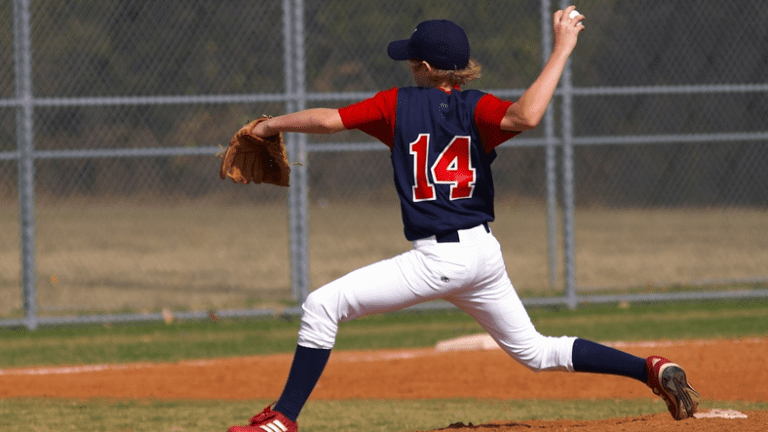Ask any coach, any current or former player and they’ll tell you, the game of baseball is all about pitching. Every play begins with the ball in the pitcher’s hand. When it comes down to it, the pitcher is really the only player on the field that is in complete control. The hitter and fielders are constantly reacting to the pitch and the result of the pitch.
When baseball training, it is important to work on basic pitching fundamentals and mechanics. Pitching and defense is at least fifty percent of the game of baseball, and if your pitchers are constantly putting your defense in vulnerable situations then you are creating a recipe for disaster.
First things first when it comes to pitching practice, you need to have a solid windup and delivery. Just like every hitter has a unique batting stance, every pitcher is going to have a different way they deliver the ball to home plate. However it is imperative that all pitchers undergo the fundamental baseball training of learning the basic mechanics to gain a solid foundation for their pitching mechanics. Once the fundamentals are learned and ironed out then a pitcher can make adjustments to add their own style or gain more comfort.
Let’s start with a basic windup with no runners on base. The key to a good windup is always staying balanced. Whether you have a low, medium, or high leg kick you must keep your balance in your delivery to home plate. Young pitchers tend to forget that the majority of your pitching power starts with your legs. If you are trying to add a few MPH to your fastball, it is important to utilize the legs and not over exert your arm; throwing with too much arm could result in fatigue and injury.
Justin Verlander of the Detroit Tigers has dominated the MLB in recent years. Let’s take a look at the Cy Young Award Winner’s pitching mechanics in the slow motion video below.
Now that you have an idea of a proper windup we can start talking about different pitches. If you’re a little league pitcher chances are you’re only worried about getting the ball over the plate, and that should be every pitcher’s primary goal. As a pitcher you have to limit your walks, otherwise giving a batter a free pass to first base will have your coach pulling his hair out. For more experienced pitchers, it is important to have at least two to three pitches in your arsenal. At the very least having a good fastball and changeup allows a pitcher to change speeds and keep a hitter on his toes. Check out some of the images below to better understand how to grip the baseball on some basic pitches.
Two Seam Fastball
Changeup
Curveball
Be sure to check back with us in the future for more baseball training tools and tips! Remember as the pitcher you are the one in control and everyone else is just reacting to you. Make sure to practice the fundamentals and the rest will fall into place.
How useful was this post?
Click on a star to rate it!
Average rating 0 / 5. Vote count: 0
No votes so far! Be the first to rate this post.






